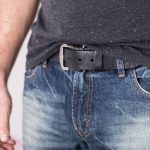Law Makes it Tougher to Tap Phones

The ripple effect of the NSW Police phone tapping scandal has widened with the announcement of a new rule surrounding the issuing of warrants for covert surveillance.
Under the rule, announced by NSW Chief Justice Tom Bathurst, judges in the supreme court will now have to give written reasons when issuing warrants authorising the use of covert surveillance, including listening devices.
The new rule is a response to the fact that many of the people caught up in the scandal were allegedly under covert surveillance authorised by warrants apparently based on little or no evidence.
So will the change work? And what will the wider effects be?
The scandal that prompted the change
In the early 2000s, NSW Police launched Operation Mascot, a secret investigation into corruption in its ranks. More than 100 police officers and journalists were placed under surveillance as part of the operation. The surveillance of police officers was so widespread that even NSW Deputy Police Commissioner Nick Kaldas was bugged.
But there were other issues at play. A subsequent parliamentary inquiry into the matter heard that of 114 people named in one warrant, 46 were named without supporting evidence.
Criticism has been levelled at the warrant system, which requires a judge to sign-off on a covert surveillance warrant application so that a warrant can be issued.
Greens MP David Shoebridge led the charge, telling 7 News: “It was not even possible to match the name on the warrants to a single shred of evidence in the affidavits that had been presented to the courts, but they are stamped, they are stamped, and they are stamped.”
How does the system of granting warrants work currently?
Warrants for covert surveillance are governed by the Surveillance Devices Act which outlines what a warrant application is to contain. This includes the type of device to be used and the offence that is suspected of being committed, or about to be committed. The warrant must also authorise trespassing so that the device can be installed.
For listening devices such as bugs, the law generally states that only a party to a conversation can secretly record that conversation. The exception to this is where there are reasonable grounds to suspect that an offence has been, is, or will be committed, and a warrant has been issued.
When issuing a warrant, a judge must, among other things, be satisfied that the surveillance will assist police in investigating the suspected criminal activity or offence.
The legislation does not currently require judges to issue reasons for granting warrants.
The new changes to the warrant process
One of the issues faced by judges is that they are each being asked to determine on average five warrant applications per day.
Combining this with their usual caseloads, there has been much pressure to deal with the applications as quickly as possible. The effect has been that warrants have been issued with little consideration about whether they should be issued. Despite this, the mere fact that judges are routinely stamping warrant applications without any real scrutiny has led to accusations that the courts are “in bed” with police.
Chief Justice Bathurst announced the new procedural requirement for supreme court judges when dealing with warrant applications from any state or federal agency earlier this month.
Now, judges must issue brief written reasons when determining a warrant application for covert surveillance. The reasons will be placed in a sealed envelope alongside the warrant application’s supporting documents, presumably to be opened only if issues emerge about how the warrant was obtained.
Chief Justice Bathurst said judges were relied on to act responsibly, and that the new requirement: “Just focuses the attention, I think, of the judge without making what is already an onerous burden too onerous.” He also said there had been very little “direct complaint” about the issuing of warrants outside of the inquiry.
Will it work?
The key question is whether this new system will work. Will it stop large numbers of warrant applications being made, and will it put an end to corrupt or unnecessary application practices?
It will certainly slow down the process. And if judges are now required to produce written reasons for the granting of each warrant, they will have to spend at least a small amount of time considering and justifying those reasons.
If the application process is slowed there will be a backlog of applications, unless fewer applications are made and police are more careful about when to apply. This is probably what the chief justice is hoping for.
Warrants are usually needed quickly, once information comes to light that allows police to ‘strike while the iron’s hot’. They won’t have their warrant application considered if they have already cluttered the system with unnecessary applications, so they will hopefully tread more carefully when applying.
The future of covert surveillance
The issues surrounding police covert surveillance activities in NSW are well-publicised and have been closely scrutinised.
It is difficult to imagine a happy and cohesive unit in the senior ranks of the police force, given that one of its most senior members was placed under surveillance, apparently without just cause.
If the new process prevents some unnecessary warrant applications being made, and means warrants are considered more carefully, then it is a step in the right direction.
Receive all of our articles weekly
Author






